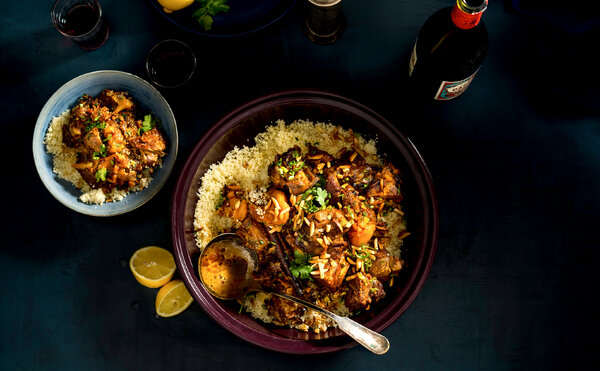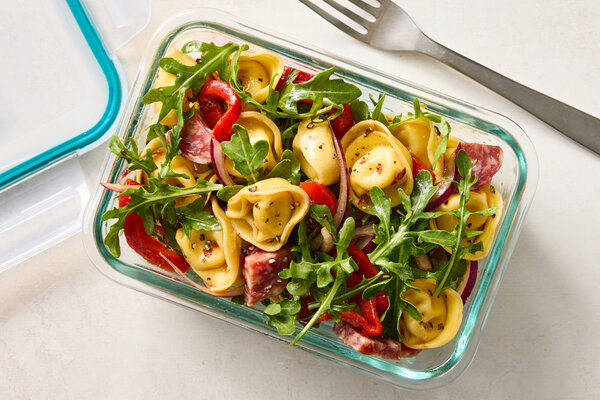Learn the history and the techniques that make up the basis of this classic North African dish.

A Moroccan dish, tagine merges sweet and savory flavors.Francesco Tonelli for The New York Times
[This article was originally published on Feb. 14, 2017.]
Revered for its balance of sweet and savory flavors, the tagine journeyed from North Africa to France, a link to the country’s colonial past. The fragrant stew gradually found its way into home kitchens. This guide is part of The New Essentials of French Cooking, the 10 definitive dishes every modern cook should master.
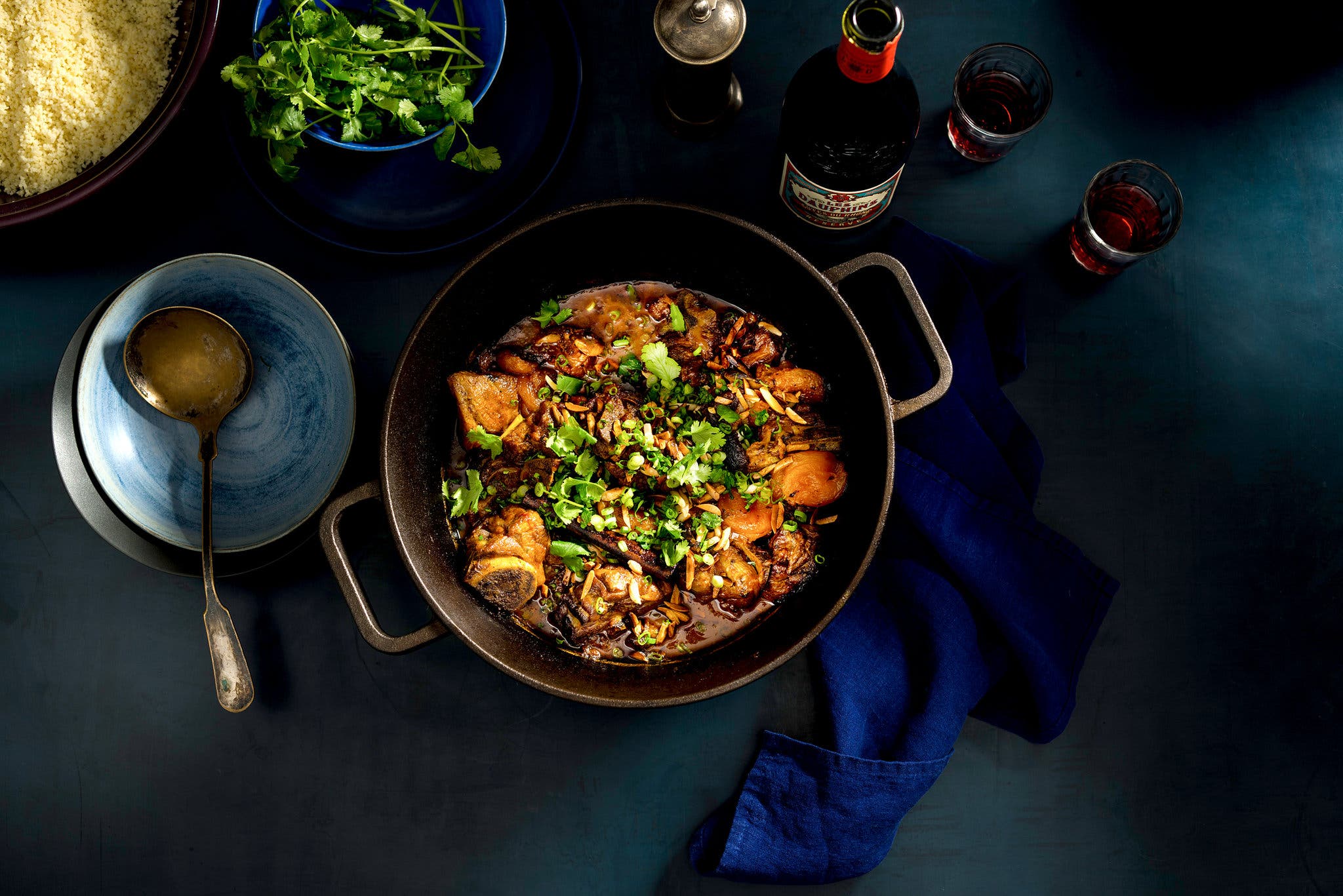
An Overview
Tagine isn’t part of the codified French cuisine, nor is it something you’ll find at traditional French restaurants, either in France or abroad.
But given the estimated five million people of North African descent who live in France, and the excellence of the dish — soft chunks of meat, vegetables or a combination, deeply scented with spices and often lightly sweetened with fruit — it is no surprise that tagine has taken hold. The dish exemplifies a modern wave of French home cooking, one that is exploring a host of diverse influences.
Perhaps one reason the tagine has taken hold in France is that the dish is very similar to a French ragout, a slowly simmered stew of meat and vegetables. But while a ragout nearly always calls for a significant amount of wine (and often broth), to help braise the meat, a tagine needs very little additional liquid. This is because of the pot — also called a tagine — used to prepare the dish. With its tightfitting, cone-shaped lid, a tagine steams the stew as it cooks, catching the rising, aromatic vapor and allowing it to drip back over the ingredients, thereby bathing them in their own juices. (A Dutch oven with a tightfitting lid will accomplish nearly the same thing.)
The intensity of the spicing also sets the tagine apart from a ragout, which tends to use aromatics rather than ground spices for flavor. But a heady mix of spices, called ras el hanout, is at the heart of a good tagine. In North Africa, each cook traditionally makes his or her own often highly complex spice blend. In our tagine recipe, we use a very simple mixture of spices that are easy to find.
Cooks preparing a tagine usually strive for a balance of sweet and savory. That is why you see spices like ginger, cinnamon or clove used to bring out the sweetness of the meat, alongside braised fruit (apricots, prunes or raisins) and savory seasonings (parsley, pepper or saffron). The dish is usually served with flatbread for dipping in the complex and fragrant sauce.
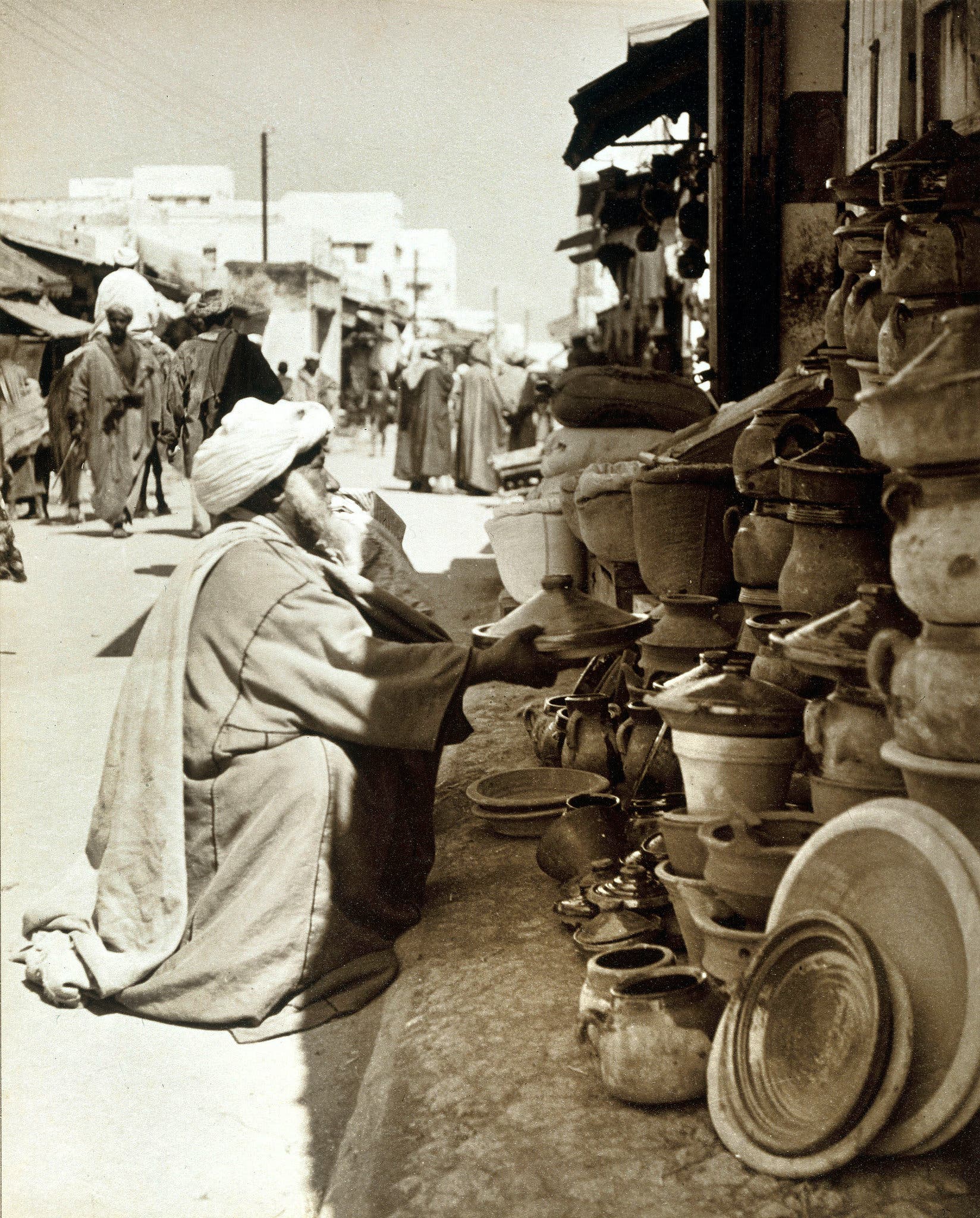
Above, a man holding up a tagine at a Moroccan pottery stall in 1933.SSPL/Getty Images
A Brief History
The tagine is a Moroccan dish, though it is common throughout the North African region known as the Maghreb, which also includes Algeria and Tunisia. The earliest versions, recorded in the 10th century, represent the intersection of two cultures: those of the native Berbers and of the Muslim Arabs of the conquest. When the spices of the Middle East met the stews of the Indigenous Berber cuisine, the tagine was born.
Those spices and tastes had entered Middle Eastern cuisine with the spread of Islam across the broader region, which absorbed the flavors of its expanding territories. In the seventh century, as the capital of the Muslim Caliphate moved from Mecca to Damascus, Muslims met Greeks and Romans, Egyptians, Persians and Franks across the Arabian desert. Cinnamon and cardamom were added to the pantry.
In the eighth century, the capital moved again, this time to Baghdad, and by the ninth century, the cuisine had become saturated with spices and full of elaborate and highly embellished dishes. It was common among the wealthy to use at least two dozen different spices and half a dozen herbs in one dish, not to mention dried fruit, nuts, honey, flowers and perfumed essences, like orange blossom water.
Those ingredients gradually found their way to the Maghreb, heavily influencing the local cuisine, including what would become the tagine. Although contemporary North African cooking is somewhat stripped down from its ornate past, many of those perfumed, spiced and honeyed flavors remain.
Food from the Maghreb first surfaced in France in the mid-19th century, after France conquered Algeria in 1830, later annexing Tunisia and Morocco. French domination of the region lasted until 1955, when Morocco gained independence, followed by Tunisia in 1956 and Algeria in 1962.
The cuisine truly gained a foothold in France during the immigration surge of the 1970s, when the French government admitted large numbers of North Africans, who settled in subsidized housing in banlieues (suburbs). Restaurants serving tagines and couscous started popping up in and around large cities in France, particularly Paris and Marseille. And the spicy lamb sausages called merguez were turned into a street food snack, stuffed into a baguette and topped with French fries (known as merguez frites).
As the French developed a taste for North African food (which is called cuisine Maghrébin), chefs and cookbook authors began translating the recipes, and cooks flocked to the kitchen.
-
Tagine or Dutch oven. A tagine is the traditional clay cooking vessel for the dish; it has a base that is wider than its tall, cone-shape top. But you don’t need a tagine to make this recipe. Use a Dutch oven or another lidded pot instead, as long as the lid fits tightly. If it doesn’t, cover the pot with foil before placing the lid on top.
-
Tongs. A tagine, like most braises, starts with the browning of the meat. A good pair of tongs will help you maneuver the lamb as you sear it in the pot.
-
Small skillet. Sliced almonds, which are used in the topping, will toast quickly and evenly in a small skillet. Choose a heavy-duty one so you won’t get a hot spot, which could burn the nuts.
-
Wirecutter, a product recommendations website owned by The New York Times Company, has a guide to the best Dutch ovens and nonstick pans.
A fragrant North African stew of spiced meat, vegetables and dried fruit, named for the dish in which it is traditionally cooked.By Meg Felling
The gorgeous aromas and flavors of a tagine are what set it apart from all other stews. Choose and use your spices with care, and take time to fully brown the meat.
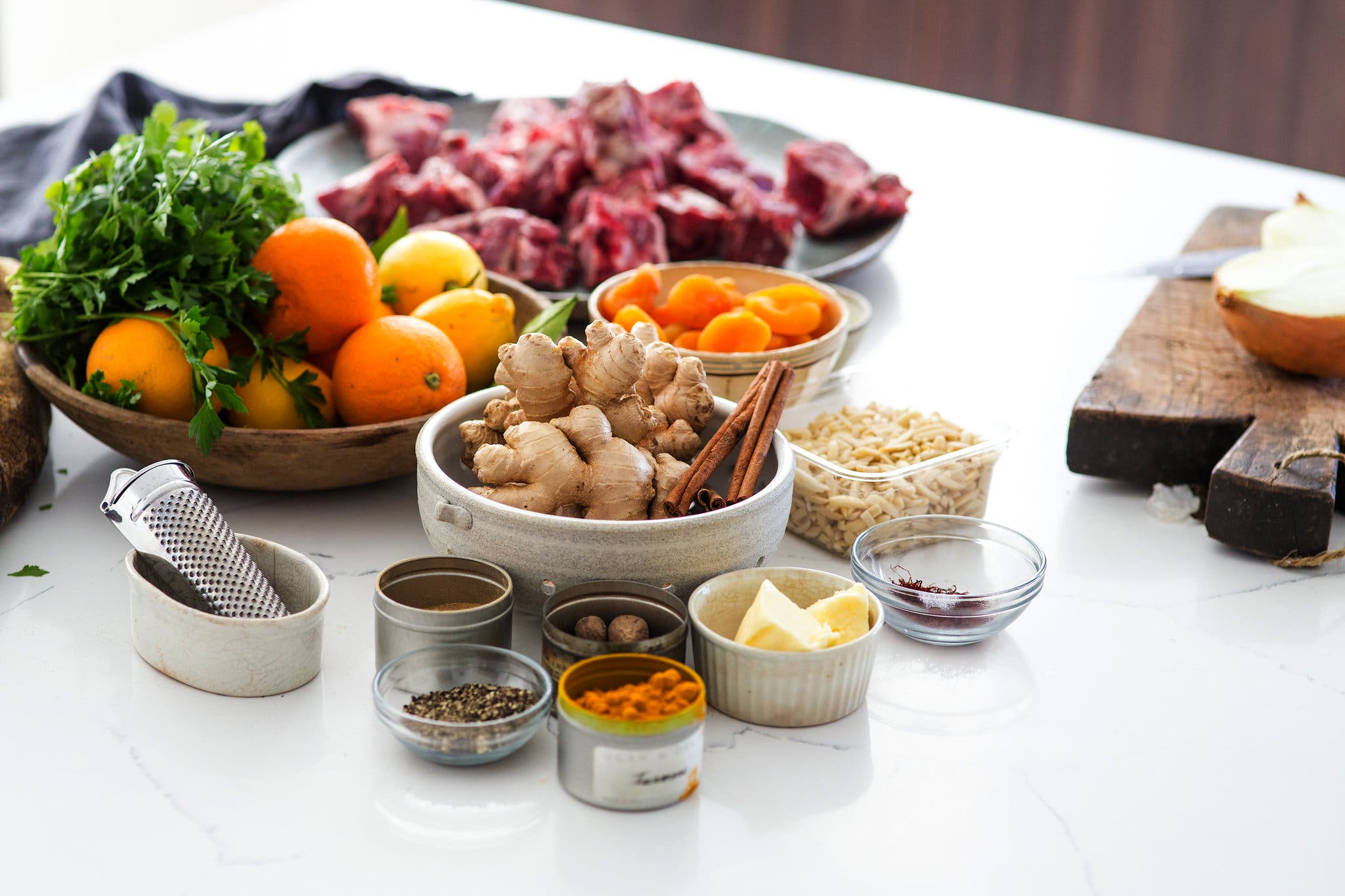
Buying Spices and Building Flavor in the Pot
-
Fresh spices are integral to getting an intensely flavored sauce. To tell if your spices are fresh, smell them. Empty a bit into the palm of your hand; if it isn’t noticeably fragrant, then it won’t add noticeable flavor to the tagine. If you are pressed for time and have only stale spices, add a little more than what the recipe calls for.
-
It is often more economical to shop at a spice retailer. They tend to grind the spices more frequently on site, which means that they are not only fresher when you buy them, will also last longer in your pantry.
-
Some recipes use ras el hanout, a North African spice mix that contains black pepper, cardamom, cinnamon, clove, coriander, cumin, mace, paprika and turmeric, among other spices. Each mix is different and contains up to 30 different spices. Here, we make our own simplified version. Do not substitute another ras el hanout blend for our mixture; each blend is unique and can be quite different, so it may not work well in this recipe. (Most Moroccan cookbooks give their own instructions for ras el hanout, and then tailor their recipes to it.) Toasting the spices adds yet another layer of flavor.
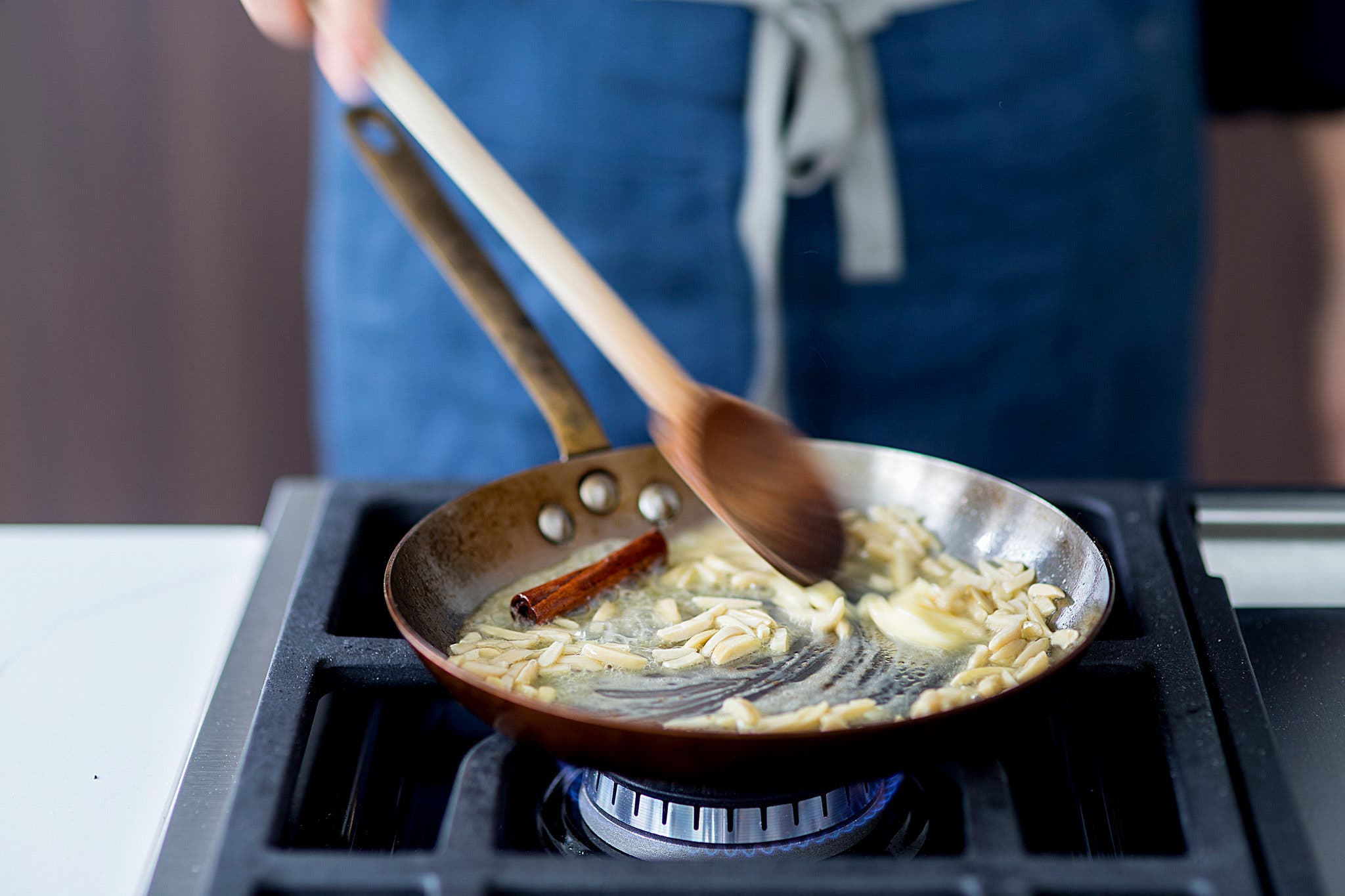
-
Both ground cinnamon and cinnamon sticks are used in our recipe. They have slightly different flavors and work together for a more nuanced cinnamon taste in both the meat and the sauce.
-
The contrast of sweet and savory is a hallmark of North African cuisine. Tagine recipes commonly include some kind of dried fruit to supply that sweetness. Here, we use apricots, which are tart as well as sweet. Raisins, prunes and dates are other options.
-
Taking a moment to cook the tomato paste in oil before adding liquid caramelizes the paste, enriching its flavor. It also rids the tomato paste of any metallic taste, which can be a problem with canned paste.
-
Adding half the herbs at the beginning of cooking and half at the end gives the tagine both depth of flavor and a pop of freshness.
-
Personalize this recipe to suit your tastes. Use bone-in beef instead of lamb for a less gamy and slightly sweeter flavor. (Beef can have more fat, so make the tagine a day ahead, chill it, then remove excess fat from the surface.) Swap in raisins, prunes or dates for the apricots. Chunks or slices of winter squash lend a delicate, velvety sweetness; add them during the last 45 minutes of cooking, along with a few tablespoons of water if the pot looks dry.
How to brown meat when creating a lamb tagine.By Alexandra Eaton
Preparing the Lamb
-
Bone-in lamb gives this tagine a rich sauce, thanks to the marrow content of the bones, along with plenty of soft, succulent meat. Lamb neck, if you can get it, is particularly juicy.
-
Salting the lamb ahead of time helps the seasoning penetrate the meat, flavoring it thoroughly. While even an hour makes a difference, if you have time, you can salt the meat up to 24 hours ahead.
-
Browning the meat gives the sauce a deeper flavor. Take your time doing this. Let each piece brown fully on all sides, and use tongs to hold up the meat if necessary, to brown the irregularly shaped pieces.
Serving the tagine.By Alexandra Eaton
Serving the Tagine
-
Tagines are generally served with flatbread for dipping in all the lovely sauce. You can use any type of flatbread — pita bread works nicely — served either at room temperature or warmed up so it is pliable. If you warm the bread, keep it wrapped in a clean cloth so it retains the heat.
-
You can also serve your tagine with couscous, either on the side or spread in a shallow platter with the tagine poured on top. Polenta is another good, though unorthodox, option.
There are countless tagine variations, with cooks personalizing the recipe to suit their tastes. Feel free to come up with your own combinations.
Meat
Use beef instead of lamb for a less gamy and slightly sweeter flavor. Choose bone-in cuts such as shanks or short ribs. Beef can have a higher fat content than lamb, so if you do make the substitution, cook the tagine the day before serving, then scoop off the fat from the surface before reheating.
Dried Fruit
You can use any dried fruit here instead of apricots. Sweet jammy dates are a more intensely sugary substitute, and they are highly traditional. Golden raisins are a more tart option. Figs, prunes and dark raisins can also be used.
Vegetables
Feel free to add vegetables to the tagine if you like. Chunks or slices of winter squash, either peeled or not, lend a delicate, velvety sweetness. Other options include eggplant, zucchini and tomatoes. Add them to the pot during the last 45 minutes of cooking, along with a few tablespoons of water if the pot looks dry when you put them in.
